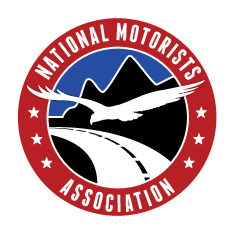The Fleecing of U.S. Motorists
 |
States that Collect the Most Tolls, Taxes, and Fines also Divert More from Highway Spending
From John Bowman, Communications Director
National Motorists Association
WAUNAKEE, WI - August 26, 2014: The 15 states that run the most speed traps and collect the most road-user fees also rank as the least fiscally responsible when it comes to transportation spending, according to a study released by the National Motorists Association (NMA).
The motorists’ rights organization compared all 50 states by number of speed traps operated per thousand lane miles, as reported to The National Speed Trap Exchange. The 15 states with the highest speed trap activity and license taxes per lane milemore than three times the average of the other 35 states.
In addition, the NMA evaluated the degree to which the states spend that money on true highway projects. Using the results from a comprehensive third-party survey of transportation officials from all 50 states, the NMA assigned a financial responsibility grade for each state based on the following criteria:
Grade Spending Restrictions
A: Road-user fees are constitutionally restricted exclusively to road construction and maintenance
B: Road-user fees are constitutionally restricted to road use, plus transit or policing
C: Road-user fees are divided by statute among roads, transit, policing and related uses
D: Road-user fees are heavily diverted to transit and non-transportation uses
F: Road-user fees are appropriated at will for any purpose
“Our analysis shows the states that target motorists the most through predatory speed traps are also the ones that charge motorists the highest fees and taxes to use the roads,” said NMA
President Gary Biller. “These states also have fewer checks and balances when it comes to dedicating this revenue strictly to maintaining roads and bridges. Motorists should be asking their public officials, ‘What are we getting for our money?’”
Road-user fees cover costs for road and bridge overhead, planning, engineering, construction, operation and maintenance without regard to state vs. local jurisdiction. Funding of transit projects as well as for highway patrol or other policing activities was not considered a direct road-use investment for this analysis.
Biller pointed out that since the 1970s many states have weakened constitutional protections for dedicated road-user fees, allowing them to be funneled into public transit projects. He added that state statutes dedicating road-user fees to roads are frequently amended to shift funds to general purpose. “The country’s highway infrastructure is in crisis, yet states permit policymakers to divert road-user fees in varying degrees to non-highway pet projects.”
The 15 worst speed trap states and their records in collecting road-user fees and in applying those funds toward critical highway infrastructure are listed in the table below. Information for all 50 states can be found here.


